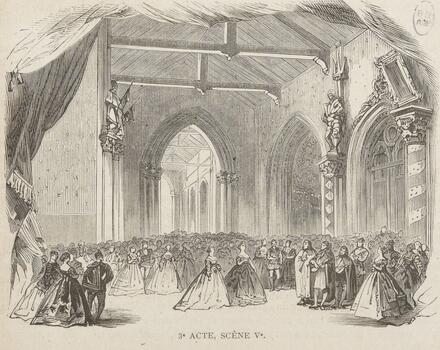Le Saphir

Opéra-comique en 3 actes créé à l'Opéra-Comique de Paris.
Félicien David’s last operatic work, Le Saphir, was premiered at the Opéra-Comique, Salle Favart, on 8 March 1865. The libretto, by Adolphe de Leuven, Michel Carré and Terence Hadot, is an adaptation of Shakespeare’s All’s Well That Ends Well. Count Gaston de Lusignan pays court to Hermine, his childhood friend, but has no intention of marrying her. The Queen of Navarre tricks him into accepting Hermine's hand. But the Count tells her that he will not acknowledge their marriage until she possesses his sapphire ring. He flees to Naples to fight with the French army, taking with him with his pageboy Olivier and his friend Capitaine Parole. In Act II all three pay court to the innkeeper’s niece Fiammeta. But Hermine has followed them, and in disguise she takes the latter’s place. Thus she obtains the sapphire ring. In the third and final act, the Count is back in France. Finding his château transformed and his wife lovelier than ever, he asks her forgiveness. She asks for the ring. He is unable to produce it and the queen proposes that the wedding be declared null and void. In the end, to Gaston’s delight, Hermine reveals that she already has the sapphire. The critic Gustave Bertrand, writing in Le Ménestrel, considered the work’s success assured by the rich variety of its music and its skilfully written libretto. On the first night, the first chorus “Amis voici le jour” was encored. The other highlight of the first act is the duet for Hermine and Gaston, “Le temps emporte sur son aile”. But it was second act above all that delighted both audience and critics. Fiammetta’s song “Quand Naples ouvrit sa porte” was particularly appreciated by the latter, who found it surprisingly full of vivacity for a composition by David. A fine quartet follows, and an effectively theatrical finale, with the tenor serenade sung offstage. In the third act, we note the comic terzetto “Beau page, mon gent sire”, Fiammetta’s “Mon beau seigneur”, and the count’s aria “Oui c’est vous seule Hermine” (already hinted at in the overture), one of the loveliest pieces in the whole score.



